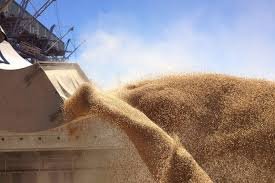About 633 million tonne of grain consisted of rice, wheat, corn, sorghum, and other cereal crops which are up 490,000 tonne from a year ago.
China’s food grain production has reached 686.5 million metric tonne increased by 0.6 per cent, according to China’s National Bureau of Statistics (NBS). In 2022, China’s total growing area expanded to 118.3 million hectare, up by 0.6 per cent.
According to the data, about 633 million tonne of grain consisted of rice, wheat, corn, sorghum, and other cereal crops which are up 490,000 tonne from a year ago despite the total growing area shrunk by 0.9 per cent to 99.2 million hectare.
The yield of cereal crops per hectare rose by 1 per cent from a year ago to 6.3 tonne. The average output per hectare dropped by 0.1 per cent to 5.8 tonne.
Wang Guirong, director of the National Statistics bureau’s rural division, said that the concerted effort by each locality and every department, annual grain production has stayed above the country’s food security benchmark, which was set by the central government at about 650 million tonne for the eighth consecutive year.
“Because of the droughts in the south region, the output of rice was 7.8 tonne per hectare, and that is 34.5 kilograms lower than the last year,” he said.
According to the NBS Henan’s grain output increased by 2.45 million tonne from the low base of last year, when the province was devastated by heavy rains and floods.
The Xinjiang Uygur and Inner Mongolia autonomous regions, and Shandong, Shanxi and Jilin provinces each saw an increase of more than 400,000 tonne.
The upturn comes as China is racing to build high-standard farmland for large-scale mechanical farming.
Authorities also helped farmers with 40 billion yuan ($5.7 billion) in subsidies for farming rice, wheat and other less lucrative crops.

